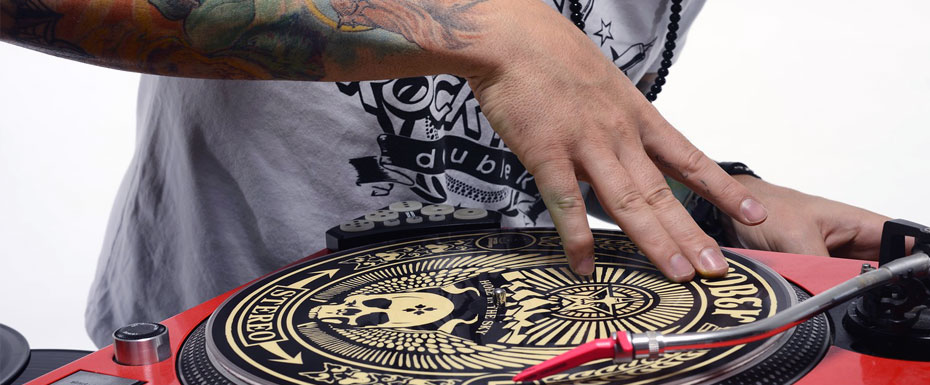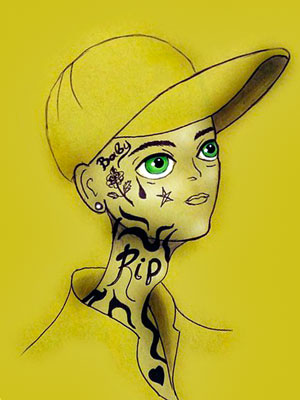
Hip-hop music consists of two basic elements: rap (rhythmic recitative with clearly defined rhymes) and rhythm set by a DJ, but at the same time, there are compositions without vocals too. Rap artists call themselves MC – Microphone Controller or Master of Ceremony. The priority and most appreciated is the art of rhyme, which MCs often compose to the detriment of the meaning of the lyrics, which turns it into a confusing riddle. For example, Ghostface Killah says that he purposely tries to compose rhymes so that nobody understands the meaning except him. As for the DJs, create rhythm on a drum machine, sample, play with vinyl records, and sometimes beatbox.
Hip-hop is currently one of the most commercially successful types of contemporary music and is stylistically represented by the many directions within the genre. Let’s plunge a bit into the history of the hip-hop music genre.
The Origins and Development of Hip-Hop Music
Hip-hop was born in New York, to be exact, in the Bronx among black people in the second half of the 1970s. At that time, it was music for parties, created by disc jockeys abbreviated as “DJs,” who worked in a very primitive sampling technique that often consisted of repeating the portion of someone else’s composition. The first MCs were literally typical entertainers; they introduced the DJs and kept the audience’s attention with energetic shouts and tirades. It should be noted that a similar way of performance was developed in Jamaica at the turn of the 1960s and 70s, thanks to the dub music technique.
The popularity of music at such parties led to the fact that local DJs started selling cassettes with recorded sets that skillfully mixed rhythms and bass lines copied from disco and funk tracks over which MCs rapped. However, it was a purely amateur activity, and at that time, there were no studios and no official releases of rap records.

Things changed dramatically when Sugarhill Gang’s single “Rapper’s Delight” was released in the U.S. in the early fall of 1979 and caused a sensation in the American popular music industry. The single is considered the first rap record, and thanks to this 15-minute track, the American public and media learned about such phenomena as hip-hop. However, despite the popularity of this song, most people agreed that it was just a musical joke that would not work further. A group of black men who wrote this song assembled almost by accident the day before the recording. Ironically, the band’s musicians were not from the Bronx but another state altogether. The classic disco rhythm and bassline were taken from Chic’s hit called “Good Times,” overlaid with rapping performed by three MCs. One of the song’s strengths is that this first 1979 rap already provided typical rhymes and the fundamental topics of hip-hop music: the details of everyday life, MC rivalries, sex, and vanity.
In the very early 1980s, there was a strong interest among rappers in European electronic pop music, whose technological discoveries, together with the development of “breakbeat,” helped hip-hop to separate itself from the rhythmic dependence on disco and funk music. Combined with the more advanced Jamaican dub technique of that time, the breakbeat rhythm brought hip-hop to a new level. The innovators of early hip-hop were Kurtis Blow, Afrika Bambaataa, Grandmaster Flash, and Whodini – their recordings in 1980-1984 were the ones that defined the formation of the whole genre. Rolling Stone magazine named “The Message” by Grandmaster Flash (1982) as the most influential recording in hip-hop history.
Run DMC, Mantronix, Beastie Boys picked up the torch of innovation, and started bringing their discoveries to hip-hop. Run DMC played minimal drum machine breakbeat, Mantronix gained recognition with their revolutionary mixing technique, and Beastie Boys combined elements of punk rock and rap and, with the help of Rick Rubin, became the first white rap group who achieved commercial success.

By the mid-1980s, hip-hop music was no longer focused solely on the party atmosphere, and the next generation of rappers began to develop more serious themes. For example, the socially aggressive raps of Public Enemy brought them a cult following among listeners, not only among black people. The musical side of hip-hop was also becoming more and more complex: the current stage in its development began with the release of the album “Paid in Full” in 1987 by the duo Eric B. & Rakim. By the late 1980s, rap music had reached a level of popularity comparable to rock, country, and pop. Major music industry institutions like the Grammy Award-winning American Academy of Recording Arts and the American Music Awards established categories for rap in 1988. The epitome of this popularity in America became NWA, MC Hammer, Kris Kross, etc., all of them addressed their music to white teens and a wider audience, which sparked the development of more uncompromising genres in hip-hop.
At the turn of the 1990s, “gangsta rap,” reflecting the criminal life of the black ghettos, became popular with NWA, scandalously known for their defiantly scabrous and aggressive lyrics. The most influential hip-hop figure of the decade is a former NWA member called Dr. Dre. He introduced a new j-funk style, the most prominent representative of which was his protege – Snoop Dogg. A few years later, the members of The Fugees trio demonstrated with their album “The Score” the possibilities of integrating hip-hop with other music styles like rhythm and blues, reggae, and even jazz. As a result, they were among the first hip-hop projects to gain wide popularity outside the United States.
There was a rivalry between gangsta rappers from the West and East Coasts of the United States in the mid-1990s, which ended in the deaths of their leaders – Tupac Shakur and Notorious B. I. G. The tragic outcome of this confrontation generated such wide discussion in the media that the rappers occupied the top lines of the U.S. hit charts almost throughout 1997.
At the end of the 20th century, the white rapper Eminem rose to fame, trying to revive the spirit of provocation and social protest typical for old school hip-hop.
In 2004 the first-ever Grammy Award in the most prestigious category “best album” went to rap artists – the duo OutKast. In today’s hip-hop, as in other major genres of popular music, producers play a significant role, and the entire industry depends on them. In the mid-2000s, the most in-demand hip-hop producers – Scott Storch, The Neptunes, Timbaland were the ones who helped master the funk aesthetic.
Although originally hip-hop was born in the Bronx and only among black people, nowadays you can find hip-hop artists in any country and any part of the world.





